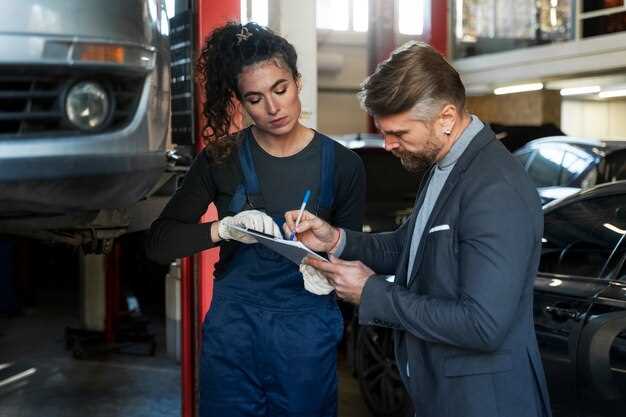

Purchasing a classic vehicle can be an exciting journey, but it also requires careful consideration and a thorough inspection. Before finalizing your decision, it is essential to perform a comprehensive check to ensure that you are making a sound investment. This guide aims to provide you with valuable tips to navigate the inspection process effectively.
A proper inspection involves more than just a visual assessment. You should examine the vehicle’s body, engine, and mechanical components in great detail. Look for signs of rust, previous repairs, or any discrepancies that could indicate underlying issues. By performing a meticulous check, you can potentially save yourself from costly surprises down the road.
Additionally, it is vital to verify the authenticity of the vehicle. Classic cars often come with a rich history, so documenting important details such as the VIN and service records will help you ascertain its value and condition. A thorough inspection coupled with diligent research creates a solid foundation for making an informed purchase.
Identifying Rust and Body Damage

When conducting a classic vehicle inspection, one of the most crucial aspects to check is the presence of rust and body damage. Rust can significantly compromise the integrity of a vehicle, resulting in costly repairs and potentially unsafe conditions.
Start by examining the vehicle’s exterior, focusing on commonly affected areas such as wheel wells, door edges, and undercarriage components. Check for any signs of bubbling paint, which often indicates rust formation beneath the surface. Pay attention to the condition of the chrome and metal trim, as these can also be susceptible to corrosion.
Inspect the underside of the vehicle, as many classic cars may have been exposed to harsh weather conditions over the years. Look for flaky or crumbling patches on the frame and other structural components. A flashlight can be helpful for seeing into dark crevices where rust may hide.
Additionally, take a closer look at any previous repair work or body filler. Body filler is often used to mask rust damage but may not hold up over time. Use a magnet to check for areas with excessive filler–if the magnet doesn’t stick, it could be a sign of rust repair.
Lastly, if possible, don’t hesitate to bring in a professional mechanic for a comprehensive inspection. They can provide insights and expertise that may reveal hidden damage that an untrained eye may overlook. Be thorough in your inspection to ensure you make a sound investment in your classic vehicle choice.
Evaluating Engine Condition and Performance

When considering the purchase of a classic vehicle, assessing the engine’s condition is crucial. A well-maintained engine can enhance performance and longevity, while hidden issues can lead to costly repairs. Here are key steps to check engine condition effectively.
Visual Inspection: Begin with a thorough visual examination. Look for signs of leaks, corrosion, and any unusual wear. Oil leaks around gaskets or seals can indicate serious problems. Ensure the engine is clean, as excessive dirt can hide potential issues.
Check Fluids: Assess the engine oil, coolant, and transmission fluid. Oil should be amber and clear; if it’s dark and thick, it may suggest neglect. Coolant should be free of debris and have a proper mix of antifreeze, preventing overheating.
Listen for Unusual Noises: Start the engine and listen carefully. Knocking or tapping sounds can signify internal damage. Pay attention to the smoothness of the engine’s operation; any roughness may indicate misfiring or poor fuel delivery.
Performance Testing: Take the vehicle for a test drive. Pay attention to acceleration, deceleration, and idle stability. A well-functioning engine should respond smoothly without hesitation. Notice any vibrations or unusual sounds during driving, which may signal underlying problems.
Compression Test: Performing a compression test can provide insight into the engine’s internal health. A balanced compression across cylinders is essential for optimal performance. Significant discrepancies in readings can indicate wear and may necessitate repairs.
Engine Codes and Diagnostics: Use an OBD-II scanner to check for engine codes. If the vehicle is equipped with this technology, it can reveal trouble codes that point to specific issues. A check for a “check engine” light is also important; make sure it’s not activated.
By following these steps, prospective buyers can make an informed decision regarding the engine condition of a classic vehicle. A thorough evaluation not only helps avoid costly repairs but also ensures a more enjoyable ownership experience.
Checking Documentation and Ownership History
Before finalizing your purchase of a classic vehicle, it is crucial to thoroughly check its documentation and ownership history. This step ensures that you are making a well-informed decision and helps avoid potential issues in the future.
Start by verifying the vehicle’s title. The title should be clear and free of liens, which indicates that no outstanding loans or claims are against the vehicle. A title with a complex history or any discrepancies can signal potential problems.
Additionally, request the vehicle identification number (VIN) and cross-reference it with the title and registration documents. This verification process ensures that the vehicle’s identity matches the paperwork. A mismatched VIN could be a sign of theft or fraud.
Next, check the ownership history. Knowing how many previous owners the vehicle has had can give insight into how well it has been maintained. A vehicle with too many owners may indicate potential problems or lack of care. Ideally, seek a vehicle that has been owned by a few dedicated enthusiasts.
Ask for maintenance records as well. These documents provide a snapshot of the vehicle’s care over the years, including any repairs or restorations performed. A well-documented maintenance history might also reflect the reliability and condition of the classic vehicle you are considering.
Finally, use online resources or services that provide vehicle history reports. These reports can include important information such as accident history, odometer readings, and service milestones. A comprehensive vehicle history report can serve as a valuable tool in your decision-making process.





